Wollangambe Wilderness Canyons
All images and text © David Noble. No image or text can be used
for any purpose without permission
The Wollangambe Wilderness is the tract of country north of Mt
Wilson, west of Bowens Creek, East of the Newnes Plateau pine forests
and south of the Mt Mistake ridge system. It is a wild area with
relatively few officially named features. The ridge systems are
complex, often scrubby and sometimes broken up by chasms and so they
can present navigational and route finding problems. Deep gorges,
flanked with sustained clifflines are in abundance.
A large number of canyons are to be found in this spectacular and
wild area. Creeks such as Bell Creek, Wollangambe Creek, Yarramun
Creek and Dumbano Creek have very long sections of canyon. This is
perhaps due to the fact that they flow from west to east - and cut
down at a rate similar to the tilt of the strata - so they flow in
and out of the same rock layers for long distances. A consequence of
this is that they don't tend to have major waterfalls.
The creeks that flow in a north-south direction however are more
vertical when they form canyons. A large number of the tributaries of
the major creeks - Wollangambe, Yarramun, Dumbano, Bungleboori Creek,
Nayook Creek are canyons.
The finest canyons include - Bell Creek (deep and dark - with
long, cold pools. This creek has long sections of canyon and its
lower constriction is quite remarkable), Dumbano Creek - like Bell
Creek has long sections of canyon and a very fine lower constriction,
Crikey Creek - a remarkable set of abseils in a deep tunnel section,
Hole In The Wall Canyon - a dark and impressive upper constriction.
Whungee Wheengee Canyon - a long cold canyon.
There are other canyons in this area equally fine but they are
less well known.
Wollangambe Canyon
Together with its tributaries such as Bell Creek, Wollangambe Canyon is
probably the longest section of sandstone canyon in the Blue Mountains.
It would be possible for parties to spend 4 or 5 days just traversing
the canyon sections of the Wollangambe alone without visiting any of
its side creeks.
The most commonly visited sections are immediately north of Mt
Wilson - the easiest access. It would be a mistake to only visit this
part of the creek for the canyon upstream of the Du Faurs Creek
junction is very fine indeed. Also, the lower sections are very
rewarding.
When these canyons were first discovered, Col Oloman described the
trips as "swalks" a mixture of swimming and walking. Many people take
flotation devices such as lilos for the swimming part.
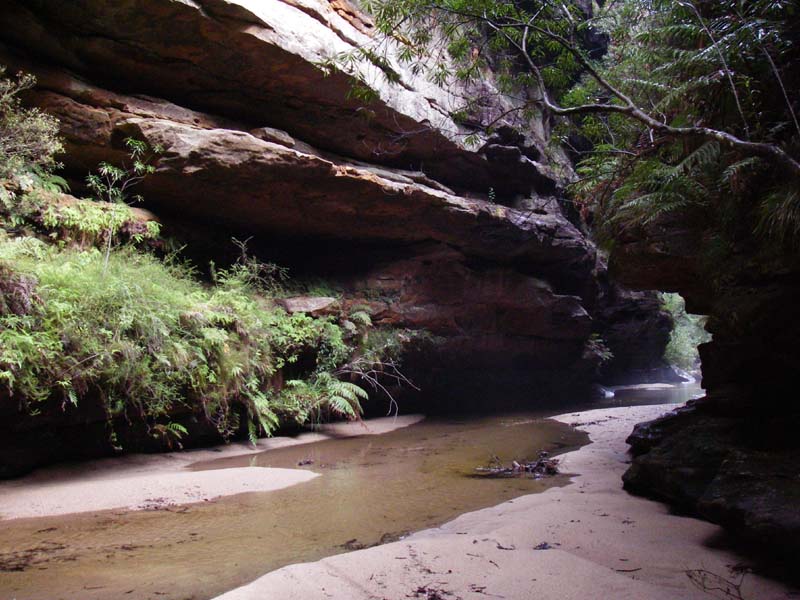
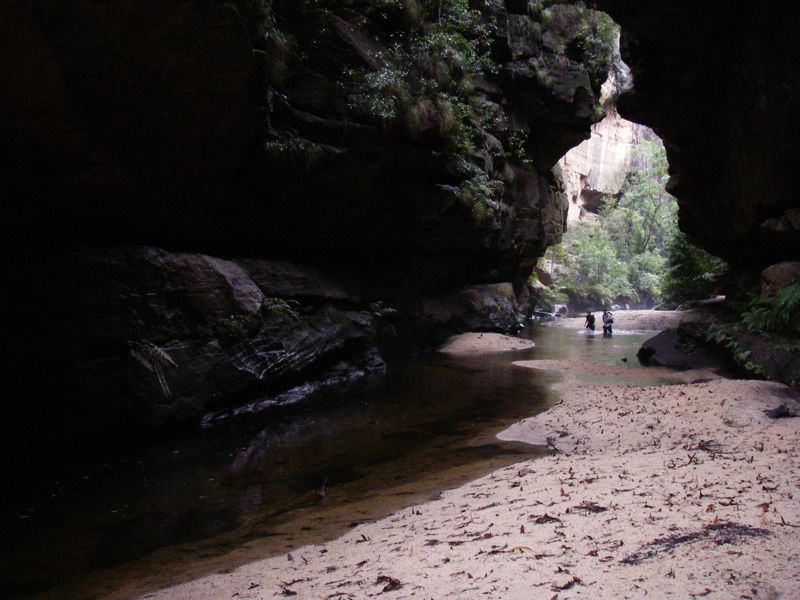


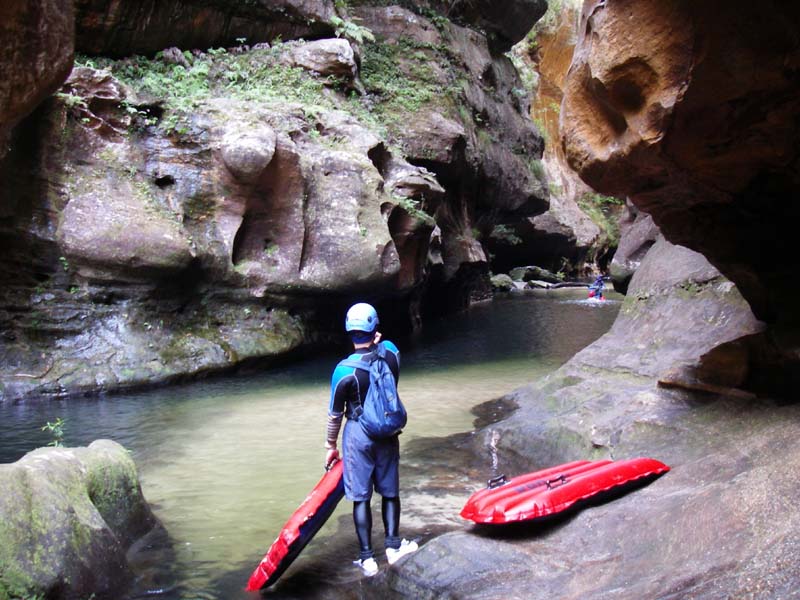
Wollangambe Creek has many tributaries and a lot of them are fine
canyons in their own right. Bell Creek and Whungee Wheengee are
probably the most spectacular of these but there around a dozen others
that are worth a visit.
Bell Creek Canyon and Tributaries
Bell Creek is the finest canyon near Mt Wilson. It starts near Bell and
soon drops into a slot. Canyon continues a lot of the way to its
junction with Du Faurs Creek shortly before the Wollangambe junction.
The long constricted section just prior to the Du Faurs junction is
very fine indeed - it is deep and very dark with long, cold pools of
water stretching into the distance.

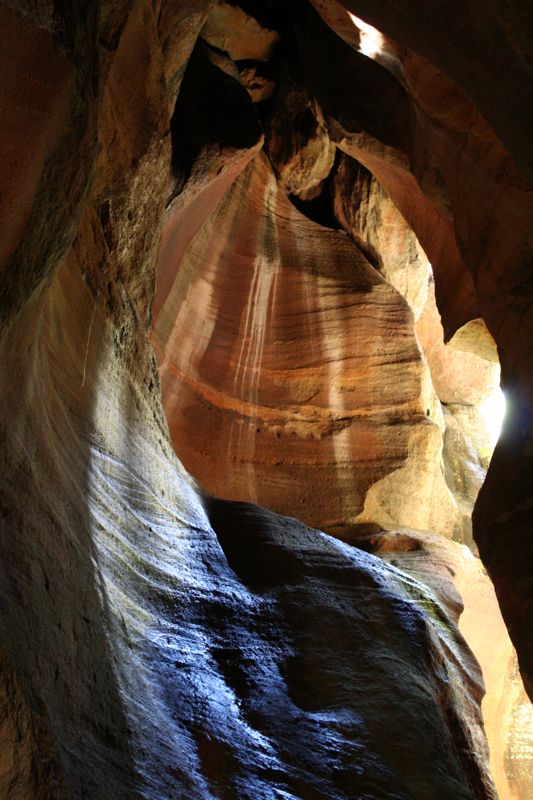
The above two images show Bellfry Canyon - a popular entry point for
parties visiting the lower constriction.

Above - Bell Creek Canyon - near the end of the lower constriction
Clatterteeth Canyon
Clatterteeth Canyon is found in Du Faurs Creek. It is like a less
extreme version of Bell Creek - and a narrower version of Wollangambe
Canyon. It contains some very fine sections of canyon but is somewhat
uneven - with frequent non-canyon sections.

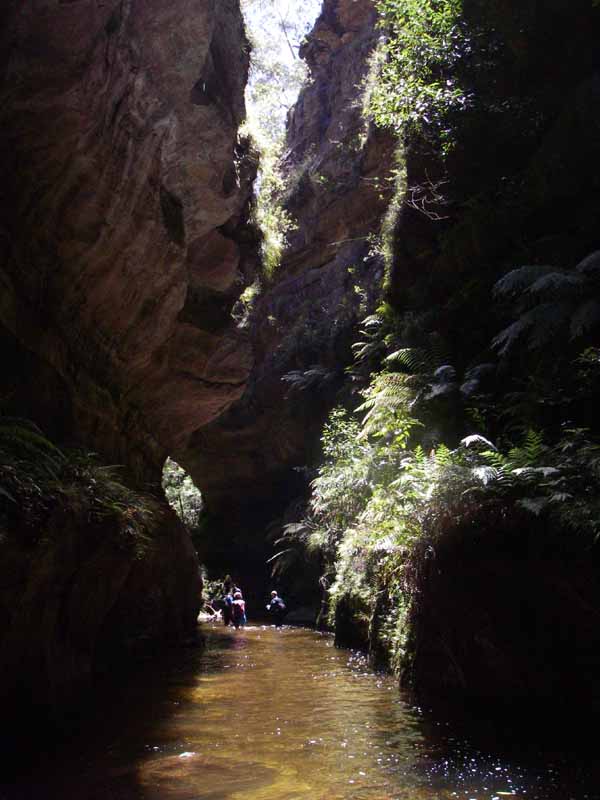


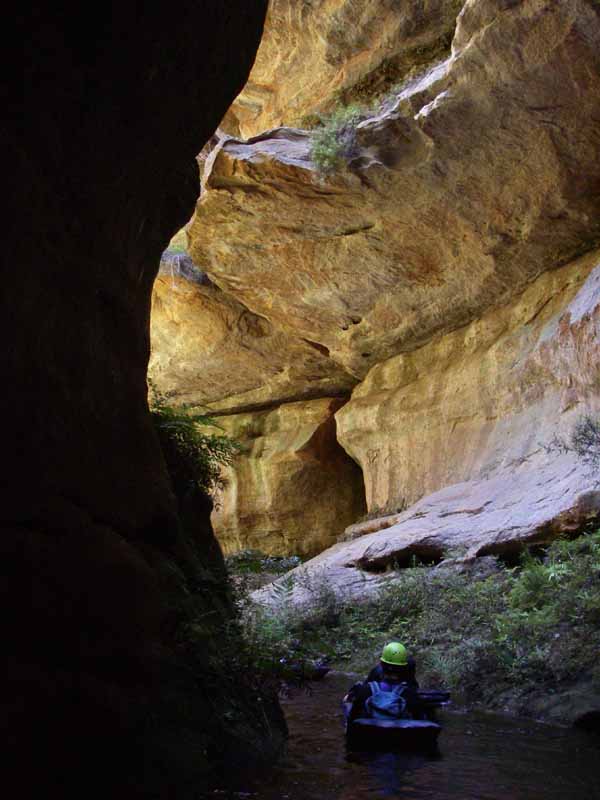

Above - the last images shows Joe's Canyon, one of the tributary
canyon of Clatterteeth Canyon, and a popular entry and exit point to
the system.
Why Don't We Do It In The Road Canyon
Not much of a canyon but popular amongst novices. It can be done
relatively safely in wet weather and it also provides a good entry
point to Wollangambe Canyon.
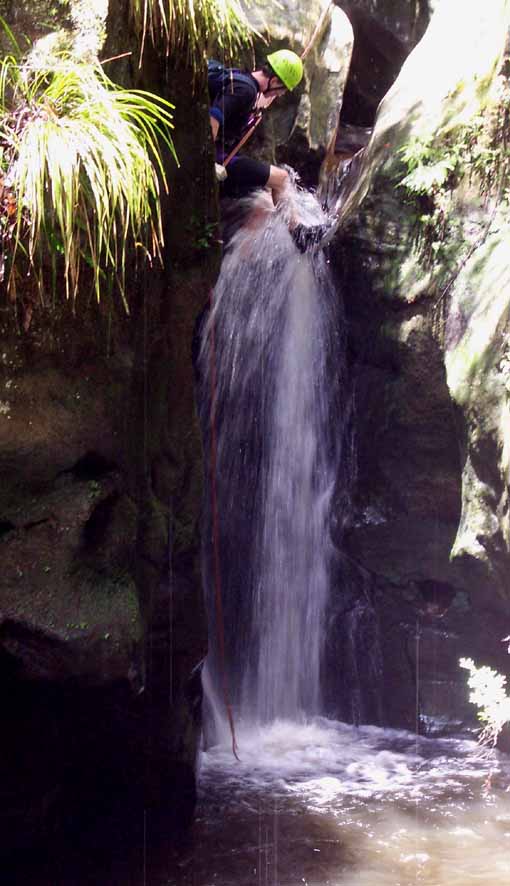
Above - flowing from south to north - it has a number of abseils, some
of which can be climbed around.
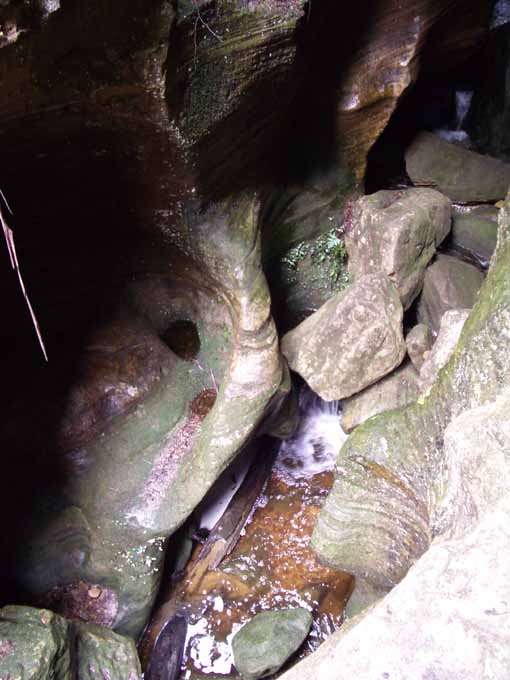
Above - near the end - looking down to a cave section where glow worms
can often be seen
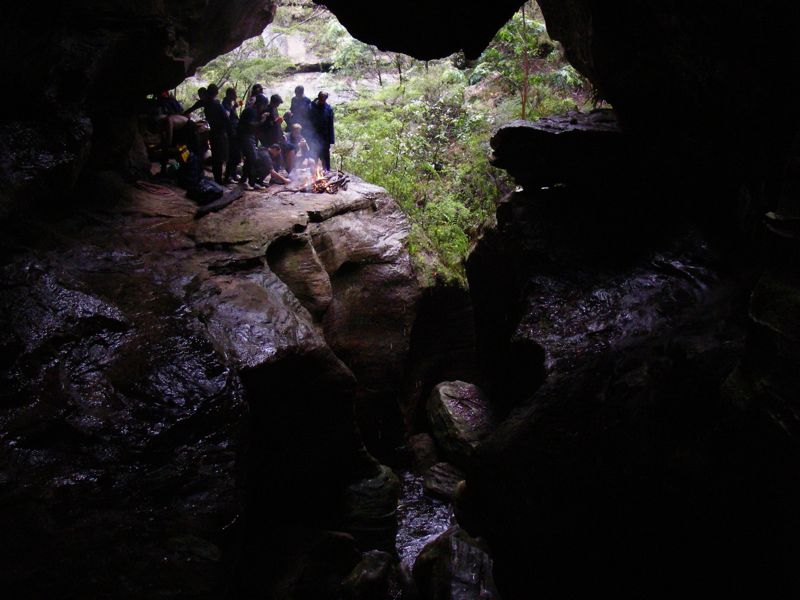
Above - a large cave above the Wollangambe junction provides dry
shelter for lunch
Whungee Wheengee Canyon
This canyon is long with some very fine dark sections. It has two
abseils to get into the lower section of canyon and quite a few
sections involving tricky scrambling to get down awkward drops. The
canyon is not always sustained and it has been marred by unnecessary
bolts being placed at both the abseils.
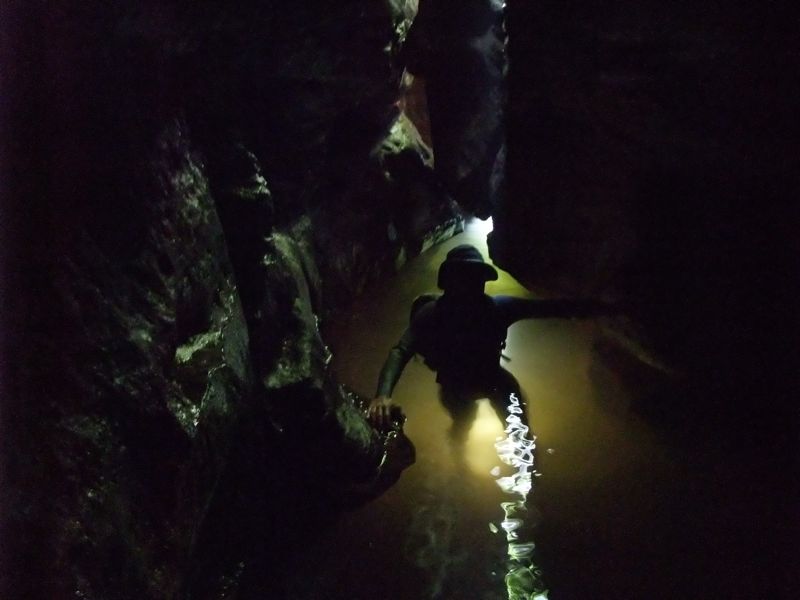
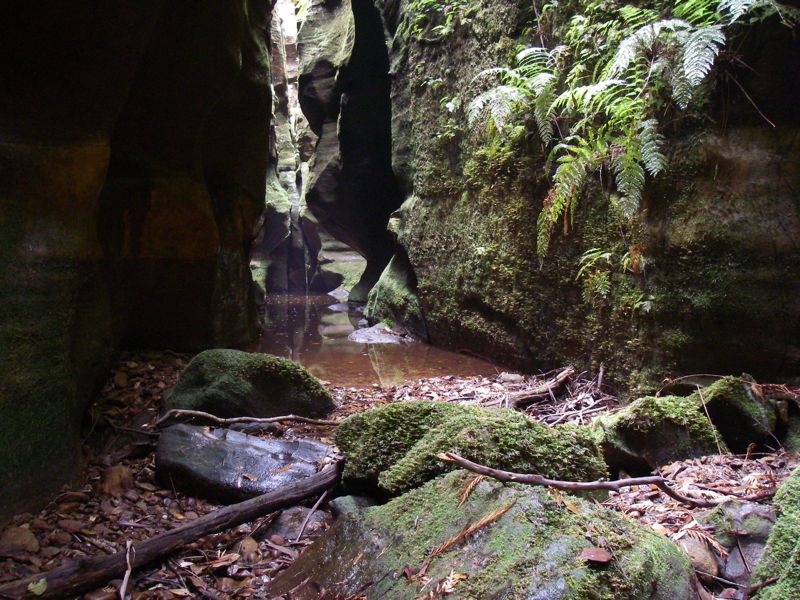
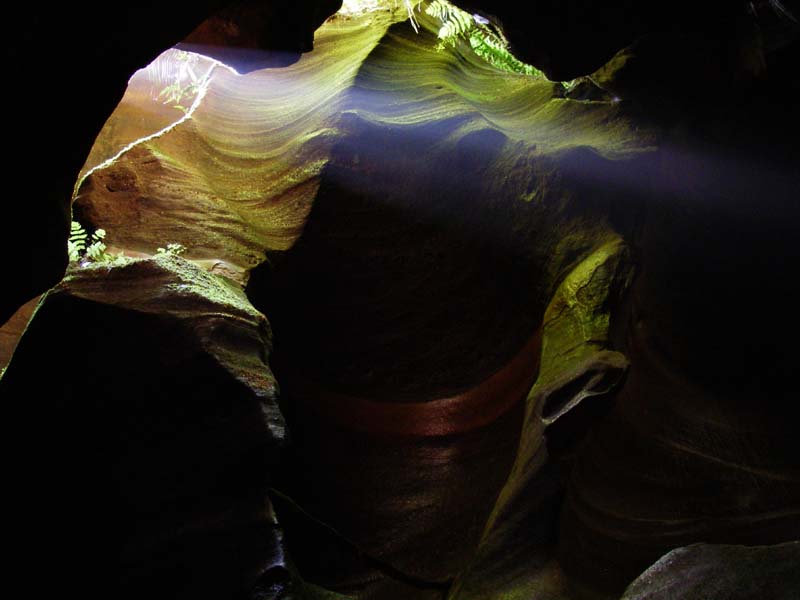
Yarramun Creek
Contains excellent sections of canyon in two main constrictions.
Early on it has a north and south branch which are both worth visiting.
The south branch is longer and has a short abseil, the north
branch has a tunnel section. Like some of the other major canyon creeks
its tributaries are often interesting canyons.
Dumbano Canyon and Tributaries
Dumbano Creek is one of the finest canyons - one that rivals Bell Creek
perhaps. It contains long sections of canyon with many swims and
obstacles to be surmounted. The remote and less commonly visited lower
constriction begins with an abseil and continues with superb quality
canyon.



Above - the above images show a tributary canyon



Return
to Main Page
Areas -
Southern Grose
Carmarthen Labyrinth
Northern Grose
Bowens Creek
Dargan
Wollangambe Wilderness - north
(Bungleboori - Nayook)
South Wolgan
Newnes Plateau - the pagoda canyons
Newnes Area
Glen Davis
Coorongooba Labyrinth
Numietta
Other Areas


























